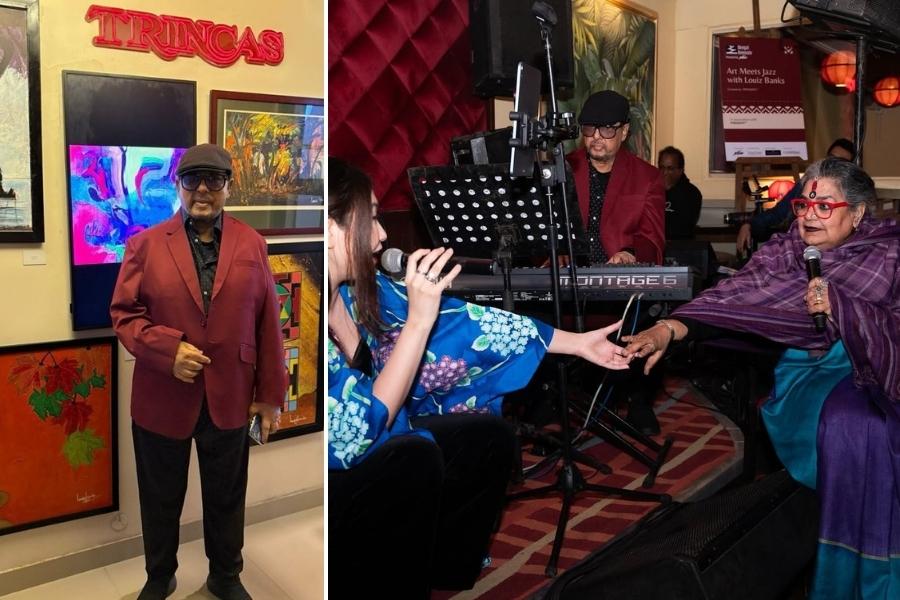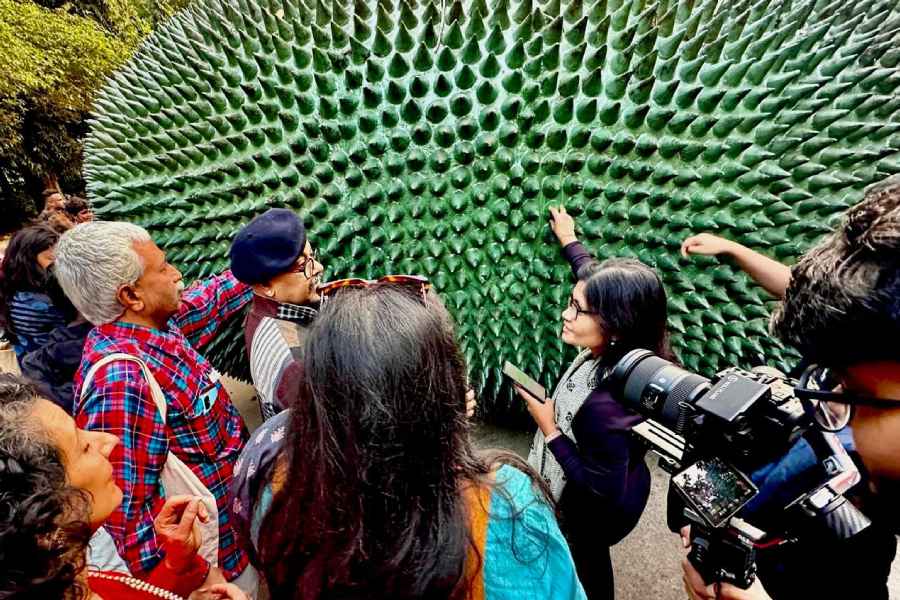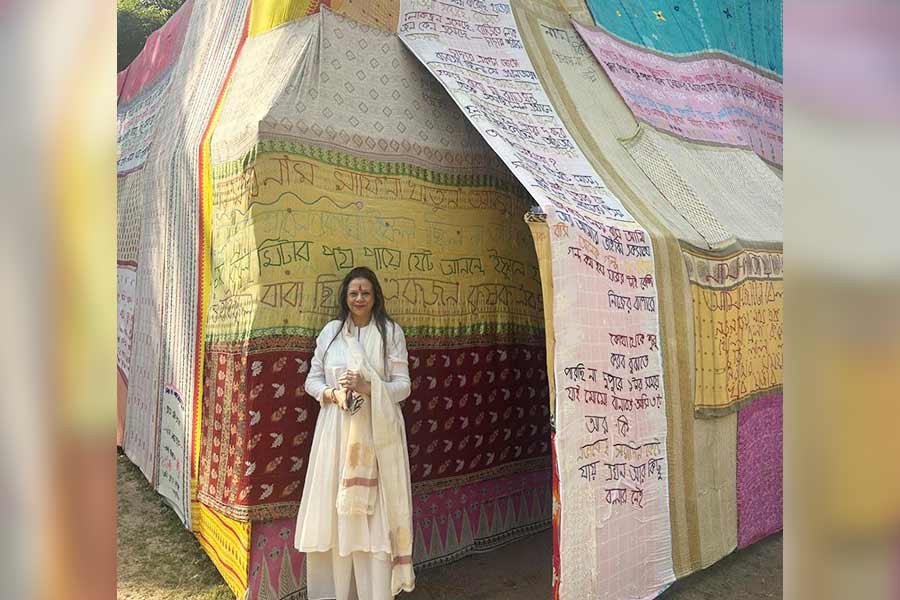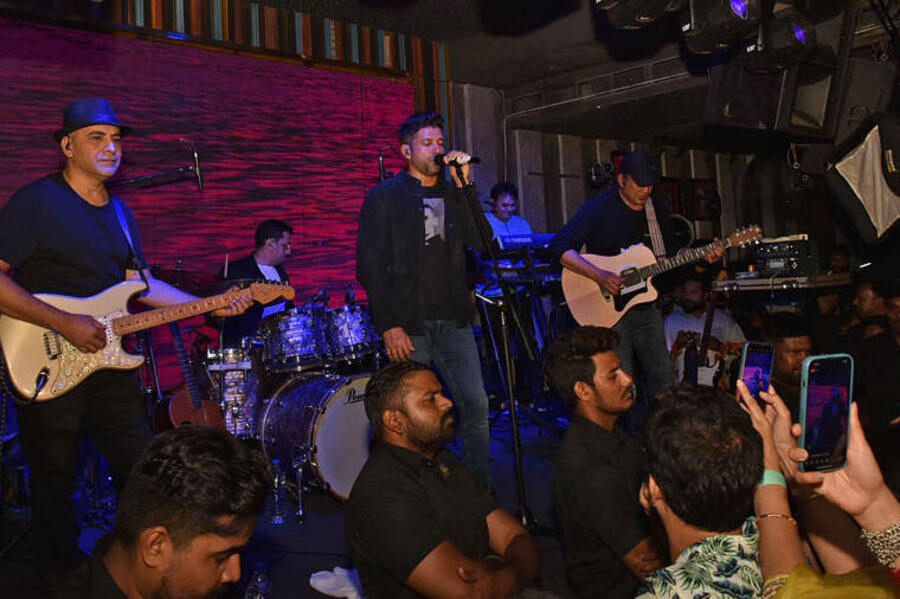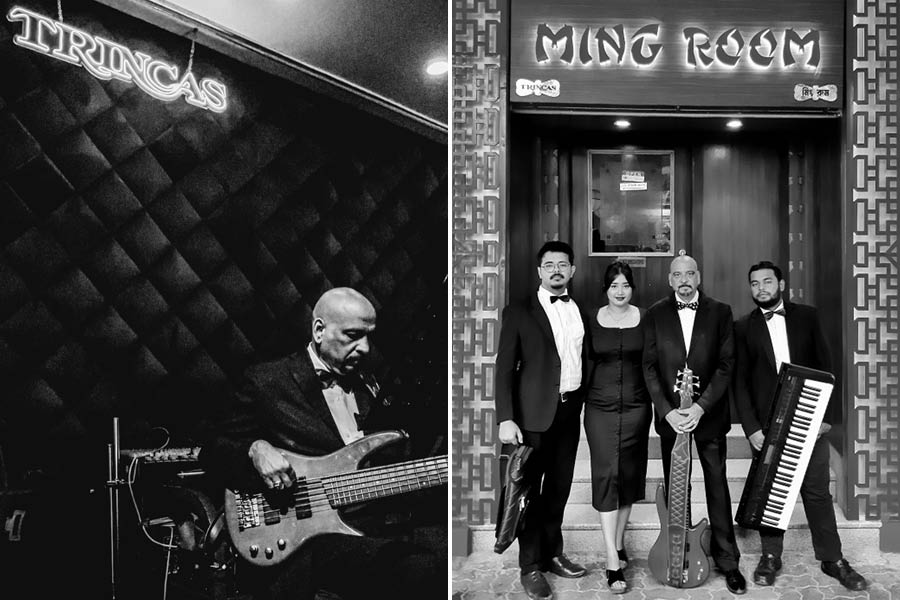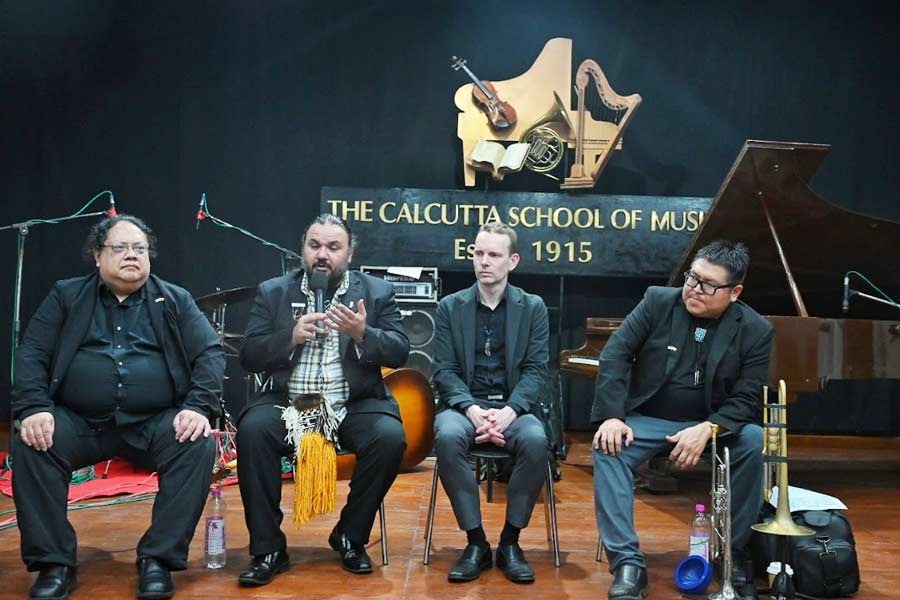Winter in Kolkata drapes the city in a cosy shawl of nostalgia, softening its usual bustle into a gentler, more reflective rhythm. Unlike summer's searing blaze, when the air feels molten, winter glows with a quiet warmth, making life feel a little sweeter.
On one crisp winter evening, as Park Street shimmered beneath the endless strings of fairy lights, Trincas — the legendary cradle of Calcutta’s jazz scene — welcomed Louiz Banks to its stage. With Gino Banks on drums, Shashank Das on bass, Rahul Wadhwani on keys, and Eden Kasang lending her voice, the evening buzzed with energy, each jazz number flowing seamlessly into the next.
Often seen in his signature baseball cap, hallmark goatee, and long curly locks tied neatly back, Banks, a composer, pianist, and musician, is revered as the ‘godfather of Indian jazz’ for his extraordinary contributions to the genre over five decades. His collaborations with legends like RD Burman and Bappi Lahiri brought jazz into mainstream Indian music, while his work extends beyond performance to include iconic jingles, film scores, and innovative projects. Banks has consistently explored new frontiers, blending traditional and contemporary forms, leaving an indelible mark on Indian and global music.
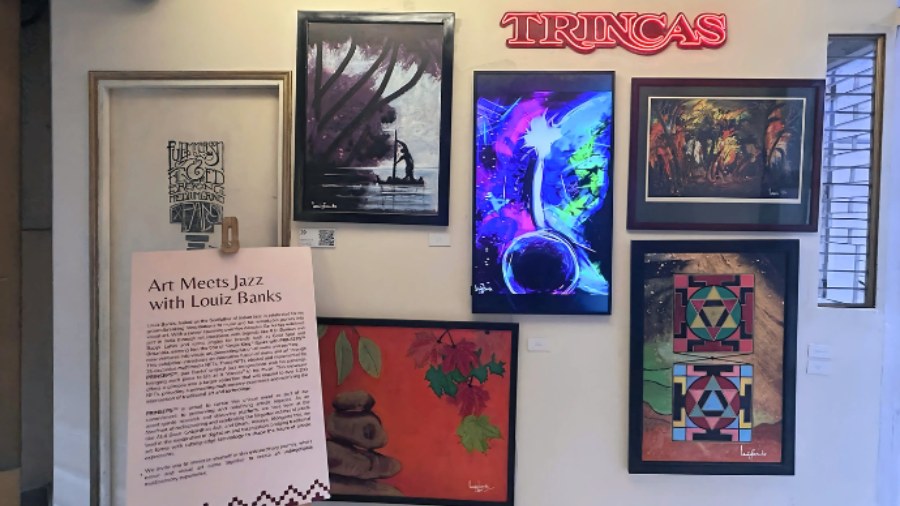
Banks’s artwork on display Manisha Maity
Banks, in collaboration with curator Prinseps, now has ventured into visual art, combining music and painting in a new direction. Titled Art Meets Jazz with Louiz Banks, this exhibition featured 35 exclusive multimedia NFTs that pair Banks’s original jazz compositions with his paintings. Each piece is brought to life as it ‘dances’ to his music, creating a dynamic fusion of sound and visuals. Presented as part of the Bengal Biennale’s Anka Banka showcase at Trincas, this multisensory experience redefines the intersection of traditional art and technology, offering a fresh perspective on both mediums.
Park Street to Bollywood
“When I think of Louiz, the image that appears in my mind is that of a gentle, legendary giant of not just the music world, but also art at large. A performer of unparalleled genius, a composer par excellence, a top-shelf educator, a painter of some reckoning and a larger-than-life father figure, he is a source of inspiration to a horde of aspiring young musicians of all genres of music,” said Zakir Hussain, the late tabla maestro known for his profound influence on Indian classical and world music, in Louiz Banks’s biography A Symphony of Love.
Banks began his journey at Blue Fox, a now-closed venue on Park Street, where his career first took shape. Park Street was buzzing in the 1970s with live bands performing in restaurants and clubs, much like a lively entertainment hub akin to New York’s.
Banks’s tenure at Blue Fox on Park Street, known for its free-spirited and unrestrained jazz, alongside the Louiz Banks Brotherhood — featuring saxophonist Braz Gonsalves, vocalist Pam Crain, guitarist Carlton Kitto, and others — became a gateway to new opportunities. In 1978, this ensemble, joined by percussionist Ramesh Shotham, performed a live concert at Kolkata’s Kalamandir, which went on to become their iconic live album Explorations. The album now has a limited vinyl pressing available through Kolkata’s Free School Street Records. This period also paved the way for his collaborations with RD Burman and his foray into advertisement jingles, among other ventures.
“I can only speak for myself about my days at Blue Fox during the ’70s,” Banks recalled. “My life changed when, one fine day, R.D. Burman came to Blue Fox and heard me play. He offered me a stint in Bombay to play piano for one of his films. I accepted, packed my bags, and left behind my Calcutta nightclub gigs to come to Bombay. He gave me the piano chair and a job in his orchestra. My life changed completely after that… the rest is history!
Ashis Ghatak, the author of A Symphony of Love, was in the audience and said, “The first thing that drew me to him was his humility. Despite being the supreme pioneer of the Indian Jazz Movement, how humble and gracious he is! Gradually I came to know of the immensity of his oeuvre. He is not just a jazz musician but a trailblazer in Indian advertising jingles, Indipop, and musical compositions, and a leader of trendsetting fusion bands, as well as a talented painter. As the flag bearer of a genre that isn’t intrinsically Indian, he popularised jazz and placed India on the global map of international jazz. His ability to evolve jazz with his unique brand of music, making it contemporary and accessible to a broader audience, is truly inspiring.
As someone once said, if you choose to be a beggar, be a jazzman. Yet, he chose to remain true to jazz, despite the allure of mainstream Bollywood music. His unwavering dedication to his art, regardless of the challenges, is what makes him stand out.”
An evening of jazz and nostalgia
As the chill outside gave way to the warmth inside, melodies flowed effortlessly, weaving nostalgia into the night. Banks dedicated his first instrumental piece, Howrah Bridge, to the City of Joy with a sense of deep awe. With the legendary Usha Uthup in the audience, there was no doubt she would step onto the stage alongside the godfather of Indian jazz. She shared a heartfelt story of recording her second album with Banks at HMV studio years ago. Together, they played Love Story once again after almost 55 years, creating a moment that felt deeply personal and unforgettable.
Banks said, “Most bands that played in the restaurants and nightclubs focussed on pop-oriented jazz. The only hardcore jazz being played was by the Louiz Banks Brotherhood. That was because I was a jazz addict and specifically hired jazz musicians to play in my band, crafting my own brand of pop jazz. And guess what? It worked!”
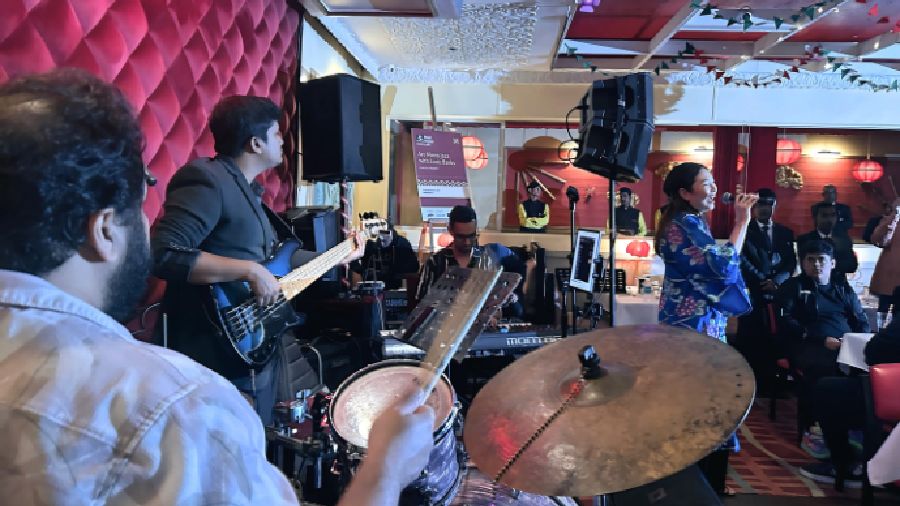
Gino Banks on drums, Shashank Das on bass, Rahul Wadhwani on keys, and Eden Kasang on vocals
With a blend of pop-jazz and crowd favourites like All About That Bass and Flowers (sung alongside Uthup), the audience was drawn into the music, swaying effortlessly to every rhythm. Tracks like 500 Miles High, Fly Me to the Moon, and Oh Darling resonated deeply, while drum solos, intricate basslines, and pulsating beats enriched the experience, elevating the evening into a truly immersive performance.
The hall at Trincas, decked out in its timeless charm, felt like stepping into a time capsule. The audience, mostly from an older generation, sat fully present — no phones in the air, no endless recording like at today’s concerts. Instead, they soaked in the music, reliving memories of a bygone era. It was as if the tunes carried them back to a simpler time, where the joy of the moment mattered more than capturing it. Legendary drummer Nondon Bagchi, a member of the iconic band High, and acclaimed Indian author Amitav Ghosh were also in attendance.
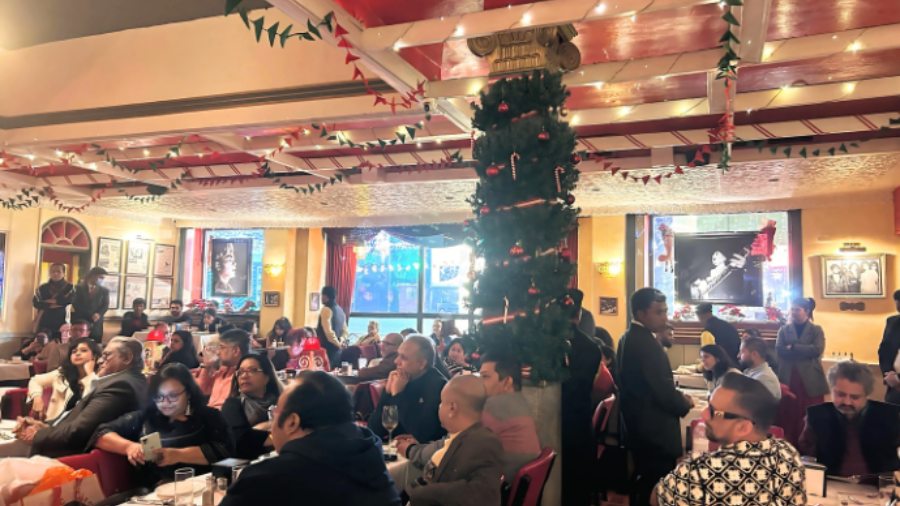
A packed house at Trincas
As the final notes faded, a sense of reverence filled the room. Banks’s music, a fusion of tradition and innovation, brought people together in a celebration of creativity and authenticity. It was a night that not only honoured his legacy but also highlighted the enduring spirit of jazz that continues to evolve and resonate.
